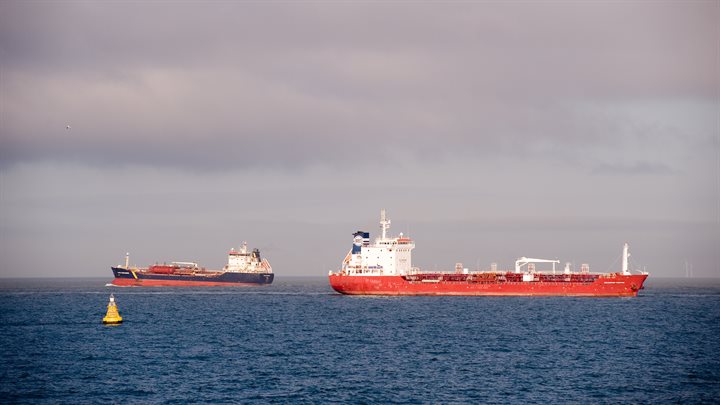Anchorage areas
Vessels sometimes have to wait at sea, for instance because they have not yet got permission to enter the port. So they stay in an anchorage area, the maritime equivalent of a car park. The arrival of extra wind farms and the rise in traffic in the anchorage areas increases the risk of accidents. Vessels in anchorage areas may suddenly come adrift, with the risk of them drifting into other vessels or causing damage in a wind farm. How could we better use anchorage areas to make shipping increasingly safe?

There are anchorage areas close to Vlissingen, Hook of Holland, Scheveningen, IJmuiden and Schiermonnikoog. The waiting vessels remain in their place by veering out the anchor so that it rests on the seabed. The anchor should then hold in the seabed, but things sometimes go amiss. In stormy conditions, for instance, the anchor could break out: it works loose and then skips across the seabed. The vessel then moves unpredictably, which can lead to damage to cables and wind turbines, among other things. Vessels with an anchor that breaks out of the seabed sometimes also have trouble getting their engines started. Then the vessel will float adrift, out of control, for even longer.
No-anchoring zones
Designating no-anchoring zones is one way to reduce the risk of drifting vessels. The idea is that waiting vessels can sail in that area in a careful and controlled way. A Formal Safety Assessment was carried out to investigate whether a no-anchoring zone between Rotterdam and Amsterdam is feasible and safe. That is a study which assesses safety risks and potential measures. The proposal for a no-anchoring zone was submitted to the International Maritime Organization (IMO) and will be discussed in 2024.
Early warning and software to recognise danger
Vessel Traffic Services (VTS) coordinates and provides pilot services for shipping. VTS operators support vessels and help with navigation. VTS adjacent to anchorage areas can also warn shipping of poor weather, so that vessels can take the necessary precautions in good time. Ports can issue warnings around 24 hours in advance and ask vessels to take suitable measures. In addition, software can be used to identify hazardous situations at an early stage. For instance vessels at anchor outside the anchorage areas.
Anchorage circles
Anchorage circles have been established in anchorage areas where this is possible. Anchorage circles reduce the risk of collisions involving moving and drifting vessels, and other objects. The circles are big enough for vessels at anchor to circle safely. That is necessary, because vessels at anchor do not necessarily turn in the same direction at high tide and low tide. And, in poor weather, the crew will have to veer the ship's chain to a greater extent, which means that the vessel will need more space to turn.
Test of 'maritime crash barriers'
Wind farms form a hazard for vessels that suddenly come adrift. In the event of vessels colliding with or drifting into wind turbines they can be damaged, with the potential of danger to the crew, passengers, the vessel and the surrounding area. In 2022, MARIN tested three different sorts of barrier: artificial obstacles between shipping routes and wind farms. The test showed that it is possible to hold back a large tanker, but it is still too early to say that installing barriers at sea is definitely advisable. The various systems have both advantages and disadvantages.
Recommendations
From no-anchoring zones to maritime crash barriers: the studies carried out under the Anchorage Areas topic provide valuable knowledge. This enables us to answer a wide range of questions. What hazards do anchorage areas present in relation to wind farms? How can the anchorage areas best be used? Is it possible to anticipate hazardous situations and prevent vessels drifting out of control? And perhaps there are other contract forms possible, so that vessels occupy anchorage sites for shorter periods? The MOSWOZ team uses the knowledge from the Anchorage Areas topic to advise policy makers on these and other issues.